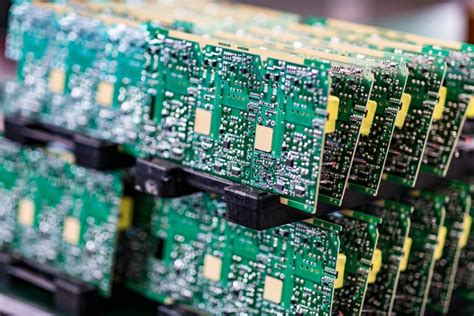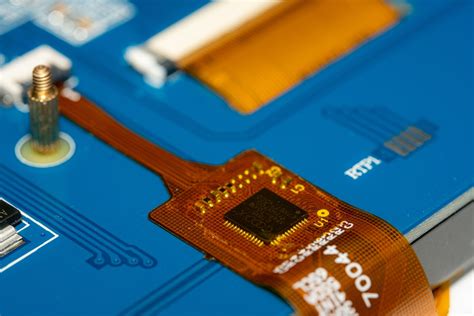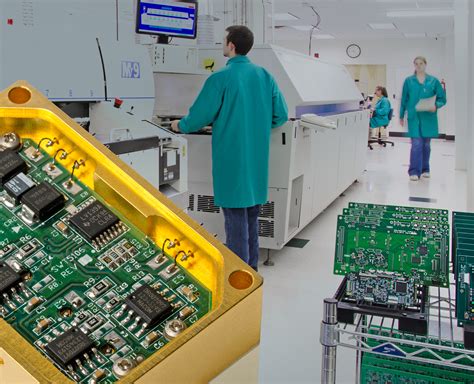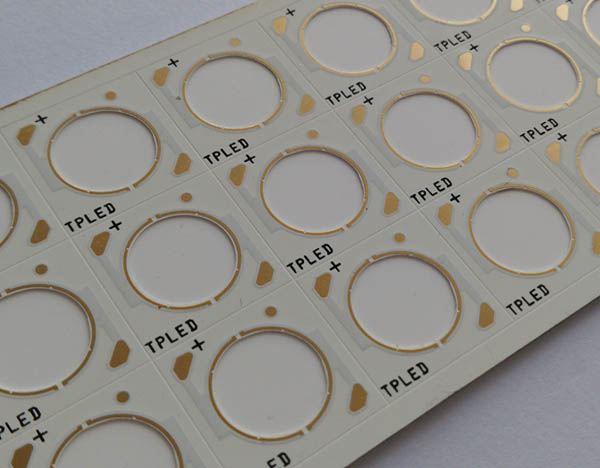Innovative Approaches to PCB Manufacturing Processes

Key Takeaways
In the realm of PCB manufacturing, several key themes emerge that reflect the dynamic nature of the industry. First, the adoption of innovative materials is significantly influencing the landscape, allowing you to explore options that enhance performance while potentially reducing PCB manufacturing costs. Modern PCB manufacturing companies are leveraging advancements in automation and robotics to streamline operations, which not only boosts productivity but also improves consistency in quality. As sustainability becomes a priority, you can find many businesses integrating eco-friendly practices to minimize environmental impact while maintaining profitability in their PCB manufacturing business. The emergence of technologies like 3D printing is also reshaping your understanding of design possibilities, offering novel ways to fabricate PCBs with increased complexity and decreased lead times. It’s essential to recognize that quality control remains a cornerstone of successful production, with advanced techniques ensuring the reliability and functionality of PCBs. Finally, as artificial intelligence continues to evolve, its pivotal role in design and manufacturing processes will undoubtedly further enhance efficiency and innovation within your projects. By understanding these key takeaways, you position yourself at the forefront of developments and trends within the PCB manufacturing landscape.

Innovative Materials in PCB Manufacturing
In your journey through PCB manufacturing, one of the most exciting aspects to explore is the introduction of innovative materials that significantly enhance production processes. Modern PCB manufacturing companies are increasingly turning to advanced substrates like flexible printed circuit boards (FPCBs) and high-frequency materials that can withstand thermal stresses and improve signal integrity. Such materials not only offer improved performance but also allow for greater design flexibility, essential in today’s compact electronic devices.
Utilizing cutting-edge materials can have a profound impact on your overall pcb manufacturing cost. By integrating lightweight yet durable substrates, you can reduce weight and volume in electronic assembly, resulting in lower shipping costs and improved energy efficiency in finished products. Companies are even experimenting with environmentally friendly alternatives, such as bio-based resins, aligning with the growing demand for sustainability in the pcb manufacturing business.
To illustrate the advantages of these innovative materials, consider the following table highlighting key attributes:
| Material Type | Benefits | Applications |
|---|---|---|
| Flexible Substrates | Lightweight, durability | Wearable technology |
| High-Frequency Materials | Enhanced signal integrity | Telecommunications equipment |
| Bio-based Resins | Environmentally friendly options | Consumer electronics |
"Innovative materials are not just about functionality; they also play a crucial role in meeting customer expectations for sustainability."
By adopting these modern approaches within your production lines, you not only increase efficiency but also position yourself favorably within a competitive market that values innovation and responsibility. As you continue exploring the realm of PCB manufacturing, consider how these advancements could help shape your strategies for success.

Advancements in Automation and Robotics for PCB Production
In today’s fast-paced technological landscape, advancements in automation and robotics are playing a crucial role in transforming the PCB manufacturing industry. By implementing robotic solutions and automated systems, PCB manufacturing companies can significantly reduce labor costs while enhancing precision and consistency in production. These automated processes allow for the meticulous handling of components, enabling you to minimize human error and increase throughput. Moreover, with the integration of advanced robotics, the overall PCB manufacturing cost can be lowered due to decreased cycle times and optimized workflows. As a result, you’ll notice a surge in efficiency that not only boosts productivity but also improves the quality of the finished products. The incorporation of smart manufacturing technologies, such as IoT systems for real-time monitoring, ensures that your PCB manufacturing business remains competitive by adapting to ever-evolving market demands. Innovations in automation not only facilitate rapid scaling of production processes but also support sustainable practices by minimizing waste during manufacturing. Embracing these advancements will position your business to thrive in an increasingly automated future while meeting the high standards expected from modern PCB production methodologies.
Sustainable Practices in PCB Manufacturing
In today’s competitive landscape, sustainable practices in PCB manufacturing have become essential for companies aiming to reduce their environmental impact while maintaining high quality. As consumer awareness grows regarding environmental issues, PCB manufacturing companies are increasingly adopting eco-friendly materials and techniques to minimize waste and energy consumption. By implementing practices such as recycling copper and using biodegradable substrates, your organization can significantly lower the PCB manufacturing cost while fulfilling regulatory compliance. Moreover, energy-efficient machinery not only cuts down on resource use but also streamlines production processes, allowing your PCB manufacturing business to enhance overall operational efficiency. You’ll discover that integrating sustainability into your business model can improve your brand’s reputation and appeal to a broader customer base who values green initiatives. Embracing these methods positions you as a leader in responsible manufacturing within the industry, paving the way for long-term growth and innovation. For more insights into sustainable PCB practices, consider visiting Andwin PCB.

Emerging Technologies: 3D Printing and PCBs
As you explore the realm of PCB manufacturing, one of the most transformative innovations is the integration of 3D printing technologies. This approach not only allows for more intricate designs but also significantly reduces the cost associated with traditional PCB processes. By utilizing 3D printing, you can create prototypes and small batches with exceptional precision, minimizing material waste and optimizing resource use. This method has become particularly attractive for PCB manufacturing companies seeking to streamline their operations while adapting to an ever-evolving market. Furthermore, 3D printing enhances design flexibility, enabling you to experiment with complex geometries that would be impossible with traditional methods. The ability to print multiple layers seamlessly also contributes to a reduction in the overall PCB manufacturing time. Ultimately, embracing emerging technologies like 3D printing can provide substantial competitive advantages in your PCB manufacturing business, making it an essential consideration for those looking to innovate in this space.

Quality Control Techniques for Enhanced PCB Production
In today’s competitive landscape, ensuring the highest quality in PCB manufacturing is essential for any PCB manufacturing company striving for excellence. Implementing advanced quality control techniques can significantly enhance the reliability and performance of your products. One effective approach involves utilizing automated inspection systems that leverage machine vision technology. These systems can quickly identify defects and inconsistencies during the production phase, minimizing human error and reducing the PCB manufacturing cost associated with reworks and failures. Additionally, employing techniques such as Statistical Process Control (SPC) allows you to monitor production processes in real-time, enabling you to adjust parameters proactively for optimal output quality. Emphasizing process documentation and adherence to international standards further ensures that your PCB manufacturing business maintains high quality and compliance, which can significantly boost customer trust and satisfaction. By integrating these sophisticated quality control techniques, you position your operation as a leader in the industry, capable of delivering superior products that consistently meet or exceed market expectations.
The Role of AI in PCB Design and Manufacturing
Artificial Intelligence (AI) plays a pivotal role in modern pcb manufacturing by streamlining processes and improving overall efficiency. When you consider the intricacies of pcb manufacturing, the integration of AI can significantly optimize various phases, from design to production. With the ability to analyze vast amounts of data, AI assists in predicting potential issues, enabling pcb manufacturing companies to address problems before they escalate, thereby reducing pcb manufacturing costs. Moreover, you can harness AI-driven algorithms to enhance design accuracy and material choices, which are crucial elements for a successful pcb manufacturing business. By leveraging machine learning techniques, these advancements allow for continuous improvement in product quality and production speed. As you navigate the landscape of PCB production, adopting AI technologies offers not only competitive advantage but also fosters innovation within your processes—ultimately redefining what is possible in the realm of pcb manufacturing.

Efficiency-Boosting Processes in PCB Assembly
In the ever-evolving landscape of pcb manufacturing, companies are continually seeking ways to enhance their assembly processes, thereby reducing the pcb manufacturing cost while improving overall quality. One of the most effective ways you can achieve this is through the integration of advanced automation technologies. By employing sophisticated machinery and robotics, pcb manufacturing companies can streamline labor-intensive processes, which allows for faster production rates and consistent quality.
Utilizing techniques such as automated guided vehicles (AGVs) for material handling or soldering robots for component attachment can significantly increase operational efficiency. Additionally, implementing smart systems that monitor real-time production data can highlight bottlenecks or inefficiencies, enabling immediate corrective actions that lead to smoother workflows.
Moreover, considering innovative materials in your pcb manufacturing business helps in creating assemblies that are not only lighter and more durable but also easier to process. Advanced materials like flexible PCBs offer new design possibilities while enhancing performance. Prioritizing these efficient processes not only meets market demands but also places your business at the forefront of technological advancements in pcb manufacturing. The synergy between innovative materials and cutting-edge automation empowers you to meet strict deadlines without compromising on quality or sustainability.
Conclusion
In the rapidly evolving landscape of PCB manufacturing, it’s crucial to recognize the myriad of innovations that are reshaping how PCB manufacturing companies operate. By embracing cutting-edge techniques and materials, you can significantly reduce the pcb manufacturing cost while enhancing product quality and sustainability. The integration of automation and robotics has streamlined production processes, allowing your business to keep pace with industry demands. Moreover, utilizing sustainable practices not only benefits the environment but also appeals to conscientious consumers, providing you with a competitive edge in the pcb manufacturing business. As you look towards the future, consider how emerging technologies like 3D printing can revolutionize your design and prototyping processes. Ultimately, staying informed about advancements in quality control techniques will be essential for ensuring that your products meet or exceed industry standards, thereby solidifying your place in this dynamic market.
FAQs
What are the common materials used in pcb manufacturing?
The common materials used in pcb manufacturing include FR-4, a composite material made of woven fiberglass and epoxy resin, as well as other advanced materials like polyimide and ceramics, which offer excellent thermal stability and flexibility.
How can I reduce the pcb manufacturing cost without compromising quality?
To reduce the pcb manufacturing cost, consider optimizing your design for manufacturability, utilizing standard sizes and features, and exploring sourcing options from different pcb manufacturing companies that may offer competitive pricing.
What innovations are shaping the future of the pcb manufacturing business?
Innovations such as advanced automation, robotics, and the integration of AI for process optimization are significantly shaping the future of the pcb manufacturing business, leading to improvements in efficiency and quality.
Can emerging technologies like 3D printing impact traditional pcb manufacturing processes?
Yes, emerging technologies such as 3D printing are beginning to revolutionize traditional processes in pcb manufacturing, enabling rapid prototyping and design flexibility that were previously unattainable.
For more detailed insights on effective PCB solutions, please click here: Andwin PCB Manufacturing







